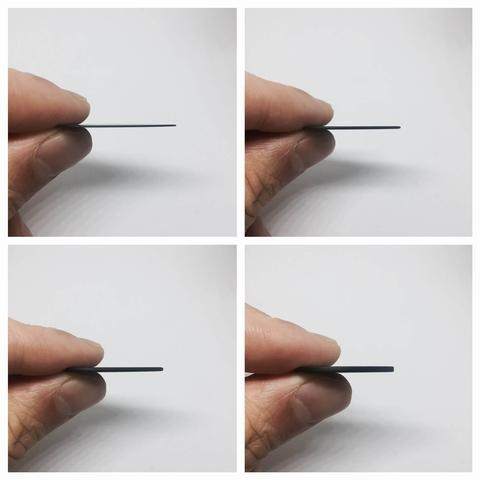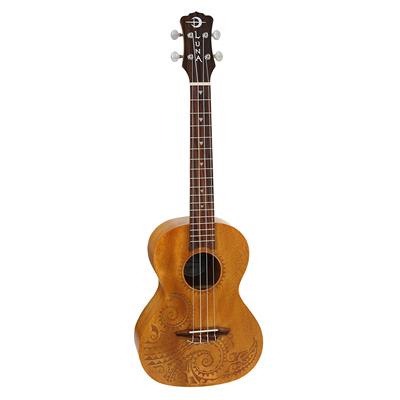Let us be real for a second (though we do try to keep it real most of the time on this website). There are a whole bunch of annoying things about musical instruments, guitars especially. Whether it is the constantly breaking strings or the need to constantly retune them or the fact that you need to learn the guitar to be able to play it. Though there is a single subject about guitars that all players can agree is the worst, most annoying, thing about the instrument. Even the fact that people will never truly appreciate your skill and always compare you to the greatest musicians who ever existed, l cannot measure up in its level of annoyance, to the very idea of picks.

The plectrum, which is the official name of the devil’s fingernail that we all know as the pick, is a very simple and yet perplexingly annoying and curiously hard to grasp item. I do not mean in terms of what it is or what it stands for, I mean in terms of actually holding it in your hand. If you have ever, even once, tried to hold on to a pick for more than 20 minutes, while also being relaxed, you know that gravity affects the pick disproportionately more than anything else in the universe. So, if picks are so annoying, why are they so prevalent in the guitar playing community? Why don’t we just abandon this little error of men, and move on to something like playing with our fingers.
Because the pick provides so many actual benefits to the sound, is the short answer. The long answer, along with some other general info about picks, can be found if you keep reading on.
Why they’re needed
So what makes a guitar pick so important that the entirety of the human population, or at least the part that plays guitar, deals with the annoyance of it? Well, the pick allows the guitar player to produce a much brighter, more expressed sound without the use of their fingernails. This means that the guitar player does not need to damage their fingers, or look kinda weird while they are not playing it. That is, of course, not the primary reason though.
The real reason is the sound of the guitar. You see when you use the flesh of your fingers to play the guitar, the sound produced is a little dull. When using something harder to play the guitar, such as your nails or a pick, the sound produced is more powerful, expressed and bright. This is why a lot of players prefer to use either picks or fingernails when playing. Yet even more prefer to use picks, simply because the pick allows the use of a fast playing technique without the need to be specially trained in fast finger picking techniques. The pick also works incredibly well for guitar solos, riffing and especially chord playing.
So it is not a surprise, to most people on earth, that picks would be so popular among guitar players. The chance to perform some amazing sonic feat with the assistance of a single, probably plastic, piece of equipment is a great opportunity. So what if the pick can be a little annoying sometimes. It is a trade off worth every single time you drop the pick into your guitar’s sound hole.
Types
Now that you have been, once again, convinced that you do actually need a pick when playing the guitar, let us talk about what type of a pick you need. Surprising as it might be, there are several types of picks you pick from (ha ha). Yes a small piece of plastic can be varied enough in its shape and the way it’s made to warrant your consideration when buying. No I am not joking. Just take a gander at the long list of types and qualities that come with these types of picks, to take the little bugger seriously.
The first thing we are going to consider is the actual thickness of the pick you are going to be using.

- Thin – a thin pick can be anywhere from .4 to .6 mm thick. These tiny little dudes are light, sometimes translucent, and incredibly easy to lose. They are also used most of the time for the purpose of playing some of the brighter, lighter and more expressive tones. They are usually made out of the hardest materials, so that they don’t end up breaking or bending too much.
- Medium – a medium thickness pick can be .6-.8 mm thick. These can be either transparent or not, and tend to be just as easy to lose as the thinnest picks. Honestly, picks are just too easy to lose. At this thickness there is a level of versatility to the hardness of picks, ranging from soft to extra hard. The sound produced by these tends to be powerful, balanced in brightness and mellowness. These are the jack of all trades among picks.
- Heavy – The thick pick tend to range in size from 0.8 mm to a full on 1.2 mm. This thickness of the pick means that the pick needs to be balanced with a softer material make. This is because the harder the material, the more likely it is to break the string. Overall thick string are very interesting, and are mostly present in electric guitars. They have a wide dynamic range, mellow sounds and are perfect for playing distorted sound.
- Extra Heavy – The extra heavy picks are not for everyone and are mostly seen used for bass guitars. The thickness of these monstrosities ranges anywhere from 1.2 mm and beyond, to a reasonable thickness of course. These extra thick picks are perfect for playing bass, as they can handle the thick strings without issue. The sound they produce is mellow, fitting the bass guitar extremely well.
The second thing you will have to consider is the actual hardness of the pick you want to pick up. (ha, puns again) This determines the sound and the durability of your pickup.
- Soft – Soft material pickups are most often seen among thicker pickups. The softer material allows the plectrum to avoid damaging the strings, while also producing a more muted, warm sound that is fitting especially for bass and lower tones.
- Hard – Hard material pickups are mostly made to be thinner. The harder the material, the more likely the pickup is to produce a brighter, stronger sound. Most often see among thin and medium pickups, in order not to damage strings easily, and to produce a specific sound. Very fitting for acoustic guitars.
The combination of these two types of qualities is important in determining what your guitar will sound like while you play it with a specific pick. And yet these are not all of the qualities that determine the quality, sound and ability of your pick. One of the most important things you can find out, is what the pick is made out of.
Materials
Material is very important in determining the sound of your pick. This might feel a little crazy, but picks do end up being made out of a whole slew of different materials, all of them lending unique characteristics to the sound of the guitar. There is a myriad of materials used in the making of picks, some of them more desirable than others, and some entirely illegal. The choice of picks is thus is up to you, though some materials present benefits that others don’t. As long as you don’t go after the illegal stuff, you should be fine with any of the picks.

The most popular materials in guitar pick manufacturing are synthetic, though there are still natural materials in use for some picks. Though some organic materials are illegal, with good cause, so don’t let me hear about you using some kind of illegal materials. I’ll come and take them away myself. Or I won’t.
- Nylon – Nylon is an incredibly flexible material that has a great flexibility and makes for great picks dedicated to strumming. Unfortunately the flexibility of the material hardly makes nylon suitable for lead guitar. Another problem is that the thinner the Nylon pick is, the more likely it is to break. So if you are looking to buy a nylon pick, look for something thicker, and you should be set.
- Celluloid – Celluloid picks have been around for a whole lot of time. They are one of the first synthetic material picks to have been made, making them the vintage choice. This makes the pick the favorite of anyone looking to have a vintage air about their sound and look. Celluloid is on the stiff side, making it the perfect pick for bright sounds of a lead guitar. Though thicker models tend to have a wearing effect on the strings. Word of warning though: celluloid wears down much faster than most other materials, which, while a desirable quality for some, might be a little annoying to others.
- Acetal – Acetal is one of the most popular pick materials around. Also known as Delrin, Delrex and a whole bunch of other names (for reasons unfathomable to me) the material is ubiquitous on the guitar manufacturing market. It is known for being a whole lot of durable and a whole lot of reliable, with a no slip surface that almost negates the most annoying quality of the pick. Still, all of this results in an unfortunate trade off, with the material having a warm and yet unremarkable effect on the sound. Shame.
- Coconut Shell – Coconut Shell is kind of obscure on the market nowadays, unless you are a jazz musician looking for a unique sound that is. If you are, you must have encountered some coconut shell picks, and they must have made you enjoy them at least a little. The material is sturdy, a little on the hard side, making it perfect for lead guitar, while also being rather durable and enjoyable to hold. While still a little slippery, it is not annoying. Good luck finding these though and note that they also might be a little on the expensive side.
- Wood – Wood is one of the most popular material types for picks in the world. And yet there are too many wood types to generalize them into a single subcategory. So here is a quick rundown of a few popular woods that pickups are made of:
- Rosewood – If you know anything about guitars, you know that rosewood is a popular material for fretboards. For the very same reasons, it is also a popular material for picks. It is smooth and sturdy, making for a long lasting, pleasant to hold pick that looks dark and handsome. The warming effect on the sound of the guitar is also definitely enjoyable.
- Ebony – Ebony is in many ways similar to rosewood. It is dark, smooth and very pleasant to hold. It makes the perfect, but expensive, fretboard material. Which again makes it a great material for guitar picks. Just watch out, ebony picks tend to be on the extra expensive side.
- Maple – Maple is one of the most popular hardwoods in guitar manufacturing. Used in guitar tops, backs, sides, necks and even fretboards, this hardwood is extremely flexible and well represented on the market. So no one is surprised when it shows up in the pick making business. It is sturdy, smooth and very bright, also having a brightening effect on the guitar’s sound.
- And More… There is a whole lot of types of woods over there. The ones I listed above are some of the most popular. Don’t be afraid of more exotic materials though, since they will probably end up feeling exotic in the way they look and play.
- Bone – The natural material market for guitar picks is very large and includes a whole lot of types of materials. No surprise then that one of the easiest to work with and interesting materials, bone, is also present. There are several sources of bone picks and some of them are actually quite illegal.
- Buffalo Bone – there is a whole lot of bones available on the market for bone pick production, though currently, buffalo bone seems to be the most popular one. The texture of the bone is not that pleasant to the touch, and the string seems to linger on the surface of the pick for a while. The resulting sound is slightly warmer and has a whole lot of string noise with it. Good for a country feel I guess. The bone is also rather dense and hard, so shoot for thinner bone picks. Just watch how quickly it wears down.
- Buffalo Horn – The buffalo horn is the preferred buffalo based material for picks, for most knowledgeable players anyway. The tone produced by these picks is full, as much as a pick can affect the tone. The bone last a long time and does not wear down easily, though it may splinter, just like wood, some day. Very nice material for picks, so keep an eye out for these.
- Tortoise Shell – Tortoise Shell picks are illegal. No matter who you are buying them from, how much you are paying for them, or why you are buying them, they are illegal. I mean once upon a time these were the primary choice bone materials, full of tone and great hardness and durability. Nowadays though, with the tortoise species this pick is produced from being endangered, buying it is illegal. I highly advise against it. Just don’t be a horrible person.
- Ivory – Granted, president Trump just lifted the ban on importing Ivory into the country, these picks are still quite illegal. If they are not illegal now, well, they were before and they will probably be illegal again in the future. The qualities are similar to buffalo horn, so might as well buy that.
- Others… I am not sure what other bone materials can be used for production of picks, but I’m guessing there are more. Just watch out for illegally traded or acquired materials. The moral cost of buying one of these might be a little too high, and I am not talking about vegan morality either.
- Stone – Stone is not a material you will see often on the market of picks. Yet it is still quite a viable material and in reality produces a whole lot of interesting effect on the strings. The tones resulting are quite pronounced, while the loudness and power of the sound is enjoyable. Stone picks do tend to be hard on the strings, so watch out. Stone is probably better for electric guitars, since the scratching noise on the acoustic can be torturous. The picks are quite inflexible and tend to be brittle, breaking if you’ve been using one for too long. Still, definitely worth checking out.
- Metal – Do you hate string manufacturers, strings and yourself? Then go ahead and get yourself a metal pick. These little beasts tend to do a whole lot of damage to your strings, causing them to break over time. Though it might be worth the trouble, since the tone produced is a lot more twangy, feeling a lot more like something a resonator guitar would produce. Durable and flexible, the range these picks are produced in is insane. Just keep an eye on your strings. Or actually, don’t. We wouldn’t want you getting hit in the eye with one.
Whether your first pick was acquired because it was given to you by some random friend or musician, or because you stole it from a shop, since you are really cool or maybe because it was given to you for free as a piece of promotional material, you have probably lost it already. Don’t mourn it, it is not worth a single thought of yours, since every guitar pick that has ever existed is not worth more than a dollar. Instead, now that you know the actual importance of every aspect of a pick, go ahead and buy new one. Because you deserve it, because you need it and because the one you last had has probably been stolen already.
Good Luck.





